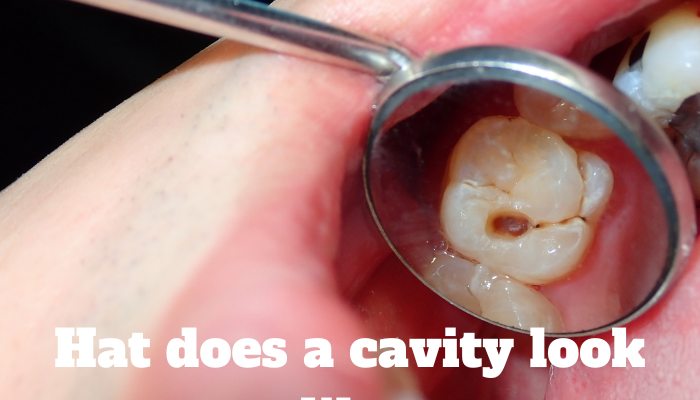We all know that cavities are bad for our teeth, but do you know what they actually look like? In this blog post, we’ll take a closer look at cavities so that you can better understand how to protect your teeth from them. We’ll also discuss some of the early signs of cavities so that you can get treatment if necessary. So, Keep reading for more tips about cavities!
What Is a Cavity
A cavity is a small hole in your tooth. It’s also called tooth decay or dental caries. Cavities look like small craters on the surface of your tooth. They can develop anywhere on your tooth, but they’re most likely to occur in the spaces between your teeth, where plaque can build up easily. Plaque is a sticky film of bacteria that constantly forms on your teeth. When plaque isn’t removed, it can harden into tartar, which is even more difficult to remove. Tartar can lead to cavities because it provides a place for bacteria to thrive. The bacteria in plaque and tartar produce acids that eat away at your tooth enamel, causing cavities. Once a cavity forms, it will continue to grow until it’s treated. If left untreated, cavities can cause pain, infection, and eventually tooth loss.
Signs and Symptoms of a Cavity
Cavities are small holes that form in teeth as a result of decay. They are most often caused by poor oral hygiene, which allows plaque and bacteria to build up on the surface of the tooth. Over time, this can lead to the formation of a cavity. Cavities can range in size from very small to large enough to cause extensive damage to the tooth. Symptoms of a cavity include:
- Visible holes or pits in the tooth
- Sensitivity to hot, cold, or sweet foods and drinks
- Pain when chewing or biting down
- Discomfort when exposed to extreme temperatures
- Bad breath
- Black, brown, or white staining on the surface of the tooth
If you suspect that you have a cavity, it is important to see your dentist as soon as possible. Cavities can be treated with fillings, crowns, or other dental procedures. Left untreated, cavities can lead to more serious problems such as tooth loss or infection.
How Cavities Are Treated
Most cavities can be treated with fillings, which are placed in the cavity to restore the tooth to its normal function and shape. The most common type of filling is an amalgam, which is made of silver, mercury, tin, and zinc. However, there are also composite fillings made of plastic and glass that can be matched to the color of your teeth. In some cases, a cavity may be too large for a filling and will require a crown. A crown is a cap that covers the entire tooth and helps to restore it to its normal shape and size. In severe cases, a cavity may extend into the root of the tooth and require a root canal. This procedure involves removing the damaged tissue from inside the tooth and then filling the cavity with a special material. Although cavities are relatively common, they can be easily treated with modern dental techniques.
Prevention of Cavities
Tooth decay is one of the most common chronic diseases in children. In fact, cavity prevention is so important that the Centers for Disease Control and Prevention (CDC) has called for increased efforts to prevent the disease. Cavities are caused by a build-up of plaque on teeth. Plaque is a sticky film of food and bacteria that forms on teeth. When plaque is not removed, it can harden into tartar. Tartar can damage tooth enamel and lead to cavities. Fortunately, there are many ways to prevent cavities. Brushing twice a day with fluoride toothpaste, flossing daily, and eating a balanced diet are all great cavity prevention strategies. Additionally, regular dental check-ups can help to identify early signs of tooth decay so that it can be treated before it becomes a cavity. By following these simple tips, you can help to prevent cavities and keep your smile healthy and bright!
Conclusion:
Cavities are a common problem, but they don’t have to be scary. Knowing what to look for can help you catch them early and prevent more serious dental problems down the road. If you’re ever in doubt about whether or not you have a cavity, we’re here to help. Our team of experts can answer any questions you may have and provide the treatment you need to get your smile back on track. Schedule an appointment today!











Comments